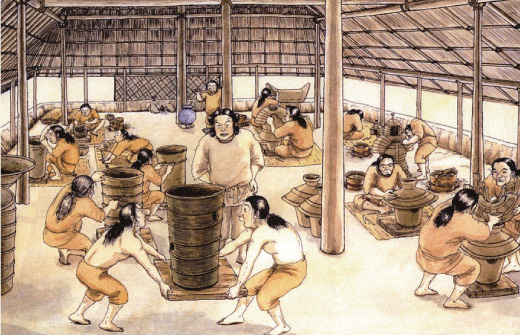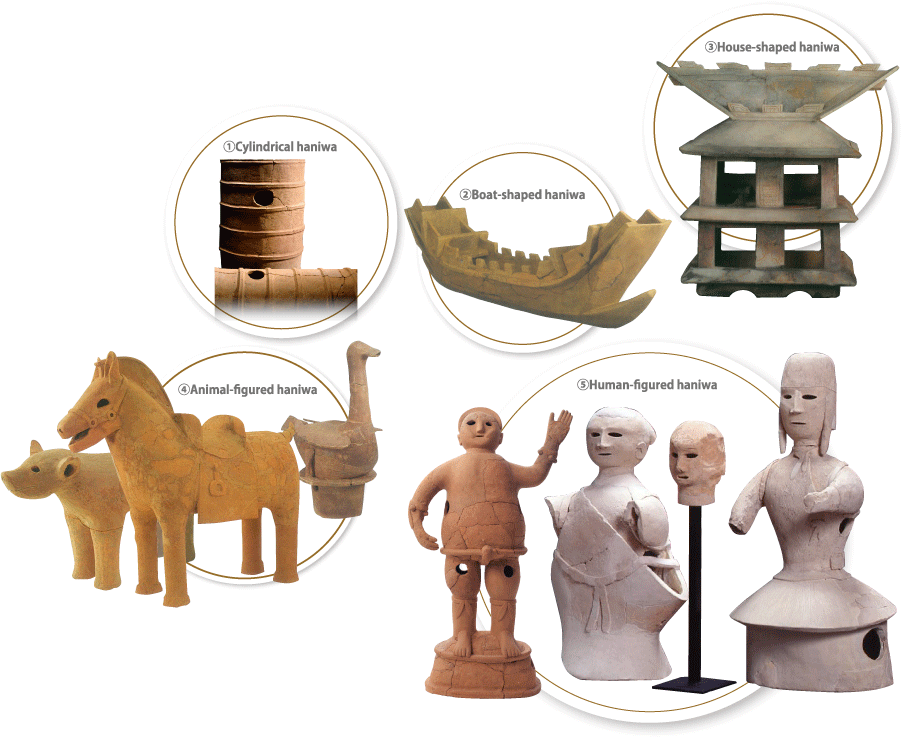- English TOP>
- Mozu-Furu Q&A>
- Mozu-Furu Q&A Vol.04

- A lot of haniwa were placed on kofun, and they came in many different shapes. Haniwa can be divided into five main shapes.
These five are (1) cylinder or jar shapes, (2) implement shapes like helmets, shields, boats and other implements, (3) house shapes, (4) animal shapes like horses, deer, boars, birds and other animals, and (5) human figures.
The only type used at the beginning of the Kofun Period was (1) cylindrical haniwa, but as time went on, variety in the shapes of haniwa increased. When the Mozu-Furuichi Kofungun tumuli were built, many different types including (4) animal shapes and (5) human-figured haniwa started to be made. -
- (1) Cylindrical haniwa (Chayama Site), image provided by HabikinoCity Board of Education.
- (2) Boat-shaped haniwa (Oka Kofun), Fujiidera City Board ofEducation.
- (3) House-shaped haniwa (Misono Kofun), Osaka PrefecturalChikatsu Asuka Museum.
- (4) Dog-shaped haniwa (Mozu Umemachi Kiln Site), Sakai CityBoard of Education; horse-shaped haniwa (Ryonan Akayama Kofun), Sakai City Board of Education; waterfowl-shaped haniwa (Tsudo Shiroyama Kofun), Fujiidera City Board of Education.
- (5) Wrestler-shaped haniwa (Imashirozuka Kofun), Takatsuki CityBoard of Education; human-shaped haniwa (Banjoyama Kofun, Aoyama 2-go-fun), Osaka Prefectural Chikatsu Asuka Museum.
 Haniwa being made (illustration: Kazuko Hayakawa),
Haniwa being made (illustration: Kazuko Hayakawa),image provided by Takatsuki City Board of Education

- Haniwa are decorative earthenware placed in rows on and around kofun.
Though decorative, the different shapes appear to have had different functions. For example, (1) cylindrical haniwa were made and lined up at various points on the burial mound.
By comparison, the animal-shaped, human-shaped and other ones in (2) to (5) were only used in a very few special places.
These may have indicated the power of the person buried in the kofun, or even reveal something about the actual funeral rites.
By the way, more than 30,000 haniwa are said to have been placed on Nintoku-tenno-ryo Kofun, the largest in Japan.











